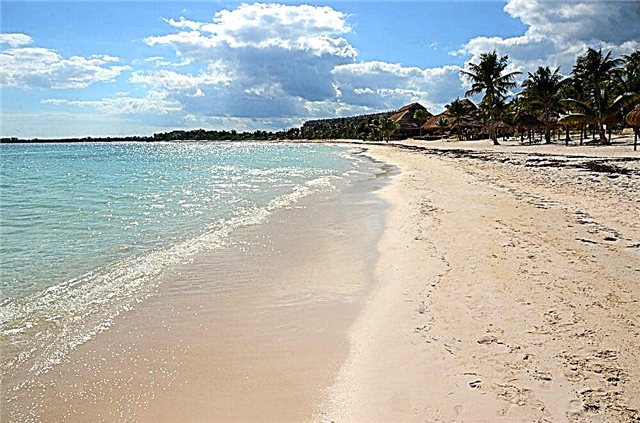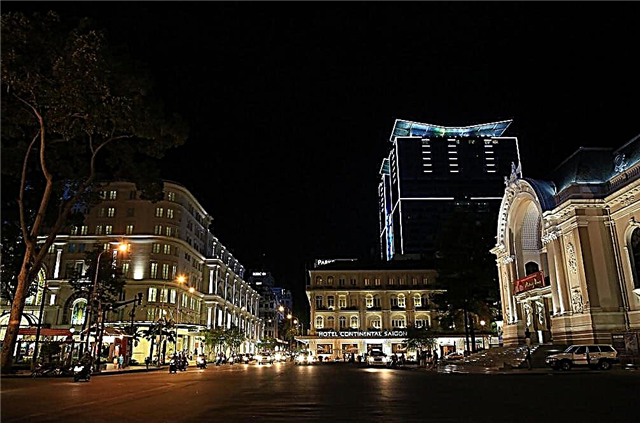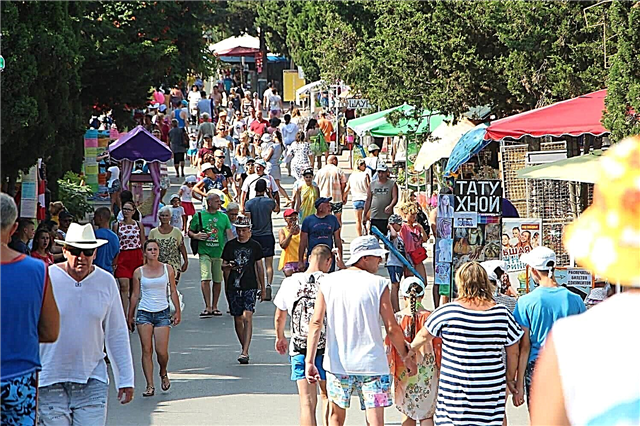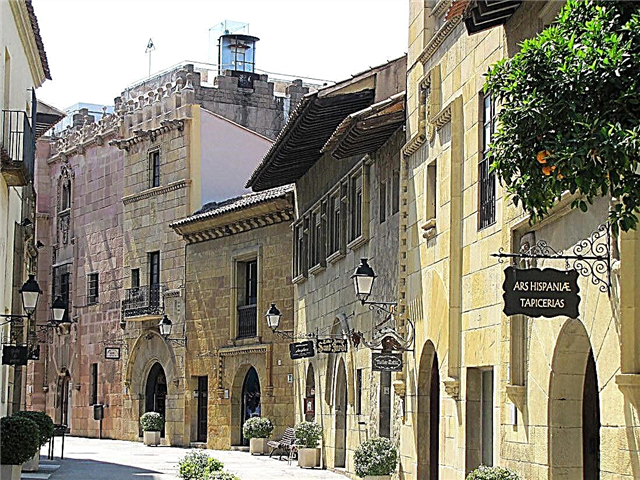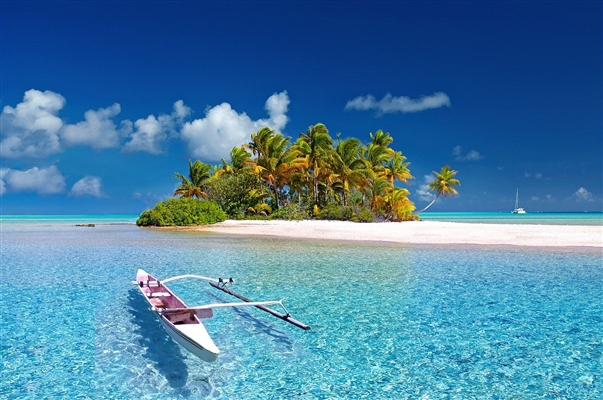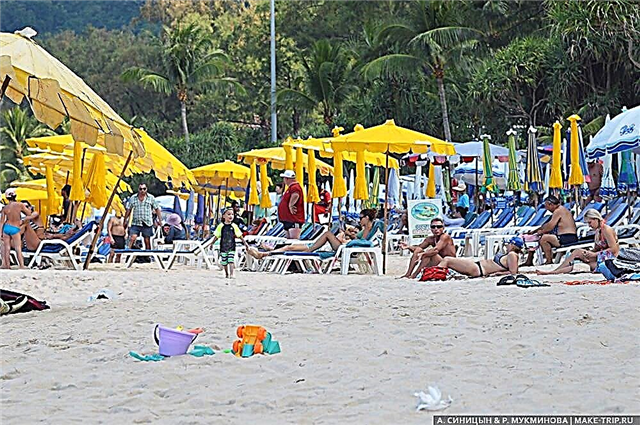Belgium is a European state that preserves the traditions, history and culture of several peoples. It occupies a small area, but, nevertheless, it is densely populated. More than 130 settlements have city status here, but only 7 of them have a population of more than 100 thousand people. The largest city in the kingdom is Antwerp with more than 500 thousand inhabitants, and the largest metropolitan area is concentrated around Brussels - 1.8 million Belgians live here.
The uniqueness of Belgian cities lies in their unique architecture. Medieval cobbled squares and streets contain real castles, towers and mansions from the times of kings and knights. Modern life is also in full swing here: all year round, sports and cultural events of a global scale are held in Belgium. Each province has its own peculiarities of cuisine, but waffles, a huge number of beers, and, of course, the best chocolate remain unchanged.
The largest cities in Belgium
List of the largest cities in terms of population in the country.
Antwerp
Center of the Belgian province of the same name. Located on the Scheldt River, it is a major seaport. Founded presumably in the 7th century, the city ranks first in the country in terms of the number of historical sites. A must-see is the Steen Castle, the City Hall, as well as museums, which showcase both contemporary art and the work of the famous 17th century Antwerp school. The city ranks first in the country in terms of the number of inhabitants.
Population - 523,250 people (2017).

Ghent
The capital and largest city of East Flanders, it is surrounded by many small villages. The city will appeal to all lovers of the Gothic.Numerous medieval sites can be viewed both on foot and by boat along the city's canals. The pearl of Ghent is the 12th century castle of the Counts of Flanders. The world flower festival is held here every five years.
Population - 262,219 people (2019).

Charleroi
The city is located in Wallonia, in the province of Hainaut. It is located on the Sambre river and is connected by a canal to Brussels, which is only 50 km from here. In the past, it was a major European center for coal mining and steel production. The city is interesting for architecture of different eras, as well as for many museums. The Museum of Photography is world famous. In terms of the number of inhabitants, it is in fifth place in the country.
Population - 201,800 people (2018).

Liège
The administrative center of the province of the same name in Wallonia is located in very picturesque places, on both sides of the Meuse River. In the past, the city was the center of the principality, a rich architectural heritage with many styles has survived to this day. A major university makes Liege a center for science and students. Previously, heavy industry was developed here, and the arms business glorified the city throughout the world.
Population - 196 600 people (2018).

Brussels
The main city of Belgium is also the seat of the Belgian king, the NATO office, the headquarters of the European Union and other international organizations. A whole scattering of unique objects has been preserved in Brussels, and the Grand Place is considered one of the most beautiful squares in the world. The striking symbol of the modern capital is the Atomium, a huge iron molecule. In addition to architectural wonders, there are a lot of parks in the city, and in the summer they even arrange a beach.
Population - 179,200 people (2019).

Bruges
Center of the province of West Flanders. It is located near the sea coast, canals pass through Bruges, due to which it is called the Venice of the North. The first mentions of this place date back to the 3rd century. Now it is a tourist center for lovers of antiquity and architecture. In addition to real medieval streets, you can get acquainted with traditional crafts: fabric and lace production, brewing, diamond cutting.
Population - 118 200 people (2018).

Namur
The center of the province of the same name and the entire Walloon region. The main attraction of the city is the fortress, founded by the Romans. It was rebuilt and expanded in different eras, and was besieged in several wars. The historic center of the city is located between the Sambra and Miass rivers, it occupies a small area. Objects of the 16th - 18th centuries have been preserved in quiet streets.
Population - 110 900 people (2019).

Leuven
This city is known as the largest educational center in Belgium. The number of students exceeds 40% of the total population. Such an influx of young people is provided by the Catholic University of Leuven, founded in the 15th century. The city, previously unknown among tourists, today has become one of the most popular destinations: ancient sights, European shopping and a rich nightlife attract thousands of people.
Population - 101 400 people (2019).

Mons
The administrative center of the province of Hainaut is located on the river channel connecting the Sambre and the Scheldt. It got its name back in the time of Julius Caesar, who set up a camp here. Mons was a major pilgrimage center in the Middle Ages; many objects of the 11th - 18th centuries have been preserved here. Today it is a commercial and university city, which in appearance is often compared to Bruges.
Population - 95 299 people (2018).

Mechelen
A small ancient city located between Antwerp and Brussels. It is currently one of two diocese centers in Belgium. The main attraction is the Gothic Cathedral of St. Rumold, founded in the 13th century. It rises above the city's main square, one of the most beautiful historical squares in the country. The city has several museums dedicated to toys, watches, history and archeology.
Population - 86 616 people (2019).

Aalst
Located on the Dandre River, in the province of East Flanders. Aalst City Hall is one of the oldest in Belgium. The inhabitants of the city grow high-quality hops, brew traditional beer and produce fabrics known throughout Europe. In the vicinity of Aalst, it is interesting to visit the ancient castles that have survived from the 17th - 18th centuries.
Population - 85 715 people (2018).

La Louviere
The city is located on the territory of Wallonia, in the province of Hainaut. In its vicinity are the ancient locks of the Central Shipping Canal, listed as a UNESCO site. The La Louviere plant produces locomotives that operate throughout the country. The appearance of the city is represented by Gothic temples, old mansions and castles. In museums, you can get acquainted with the nature of these places and the work of famous artists.
Population - 80 986 people (2019).

Sint-Niklaas
The city is located in the province of East Flanders, 42 km from Brussels. Sint-Niklaas has become a popular tourist destination due to its mild warm climate and abundance of ancient architecture. It owes its origin and name to the Church of St. Nicholas, built in the 13th century. In a relatively small town, there is the largest market square in the country, which was founded in the 13th century and covers an area of more than 3 hectares.
Population - 76 756 people (2018).

Kortrijk
The ancient city has been of great importance since the days of the Roman Empire. It is located in the province of West Flanders and is part of the Greater Lille metropolitan area. The historic center occupies a relatively small area, but is of great value. During a short walk, you can see the central square, the town hall, old mansions and churches, the embankment of the Lis river.
Population - 76 265 people (2018).

Ostend
The resort town is located on the shores of the North Sea, in the province of West Flanders. Known for its vast sandy beaches, which have been prized by royalty since ancient times. In addition to boat trips, you can visit museums, sailing and windsurfing classes, casinos, and appreciate seafood. The largest temple in the city is the Peter and Paul Cathedral (height 70 m), the burial place of the first Belgian queen.
Population - 71 330 people (2018).

Hasselt
The center of the province of Limburg is in the east of Flanders.In addition to viewing medieval architecture, here you can go for exciting shopping, visit a large amusement park, stroll through a real Japanese garden, and at the end of the day plunge into the vibrant nightlife. Hasselt is famous for the spirits jenever, which is dedicated to the local museum.
Population - 70 thousand people (2019).

Tour
This city is the oldest in Belgium, located in the province of Hainaut, has been known since the 3rd century. You can enjoy the beauty of Tournai from the height of Mount Sant Hubert (140 meters) or by climbing the oldest tower in the country, 72 m high. In Tournai, there are preserved systems of medieval fortifications, a bridge over the Scheldt River of the 13th century. The City Museum houses works by Rubens, Monet and Van Gogh. The most famous landmark of the city is the 12th century Notre Dame Cathedral.
Population - 69 550 inhabitants (2018).

Genk
Located in the province of Limburg, on the Albert Canal, between Liege and Antwerp. Genk received the status of a city only in 2000. Among the sights, the most popular is the Bokriyk Museum: buildings of the 17th - 19th centuries, where historical reconstructions and festivals are held. The outskirts of the city are very picturesque; there is a nature reserve here.
Population - 66 110 people (2018).

Seren
The small town is part of the Liege County, located on the Meuse River. In the Middle Ages, a small settlement was part of the abbey. Today there is a preserved episcopal residence - Cockerill Castle, the most visited place by tourists. On the site of the former abbey, there is a crystal manufactory, and next to it is a museum of crystal, traditionally produced in Serena.
Population - 64 270 inhabitants (2018).

Roeselare
The city is located in the center of the West Flanders province. Together with suburban settlements, it forms a commune. The history of this place goes back several centuries. The main market square is surrounded by old buildings. The most important sites are the Renaissance Town Hall, which houses the City Hall, and the Gothic Monastery. Roeselare has a unique cycling museum.
Population - 62,300 people (2018).
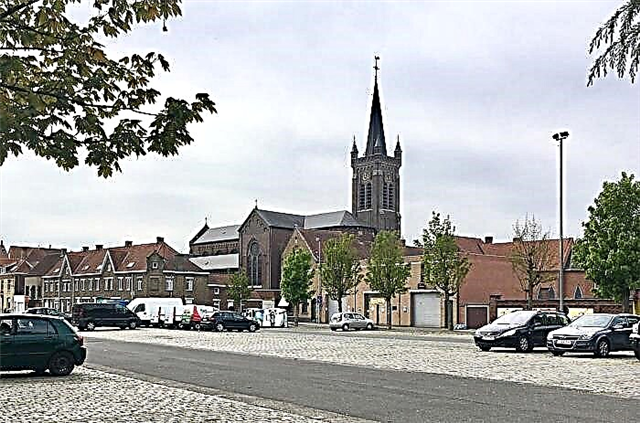
Mouscron
The city is located on the border with France, in the province of Hainaut, is part of the international metropolitan area of Greater Lille. Mouscron occupies a relatively small area, the main part of the buildings are old low-rise mansions. Must-see Church of St. Bartholomew of the 15th century, the city hall. Of particular interest for lovers of antiquity are the remains of the count's castle.
Population - 58,234 people (2018).

Verviers
The city in the province of Liege is small in size but rich in history and tradition. Since the 19th century, Verviers has become a center for the production of woolen cloth. A separate museum "Wool and Fashion" is dedicated to this. The city is located in a picturesque valley on the side of a mountain. The Fesdre River runs through it, and the streets are decorated with many fountains. The most interesting objects are the City Hall, the Church of St. Remacle and the Church of Our Lady.
Population - 55 198 people (2018).

Beringen
The city in the province of Limburg is surrounded by several villages, forming a commune with them, located on the famous Albert Canal. In the 19th - 20th centuries, coal was actively mined here. The Mining Museum tells all the details of this industry and invites you to visit real mines. Beringen is popular with hikers and hikers.
Population - 46,065 people (2018).

Dendermonde
In the past, the ancient walled city has always been at the center of events. Now Dendermonde is a small town in Flanders, which has preserved its historical appearance. The most valuable historical sites: the town hall, the complex of buildings of the beguinage of St. Alexis, as well as the Church of Our Lady of the XIV century. The shopping arcade, which has operated since the 16th century, is now occupied by the City Hall.
Population - 45 673 people (2018).

Turnhout
The small town belongs to the province of Antwerp and is located near the border with the Netherlands. Turnhout was formed in the 12th century, around the castle of the Brabant dukes. The castle itself, in a slightly modified form, has survived to this day, now it houses the city court. Beguinage is another unique complex of buildings of the 16th - 17th centuries, with a Baroque church and a functioning museum.
Population - 44 136 people (2018).

Vilvoorde
A city in the province of Flemish Brabant, located 10 km north of Brussels. Despite its small size, it is of great importance as a transport hub. Vilvoorde is located on the shipping channel and at the intersection of major railways and highways. In the surrounding area, you can explore the ruins of the princely castle, and the Chinese Pavilion of the Royal Park is located 6 km to the south-west.
Population - 44 015 (2018).

Sint Truiden
A small town near Hasselt, in the province of Limburg. The city is named after Saint Trudon, the abbey named after this righteous man was founded here in the 7th century. Now only the tower and crypts are left of it. In addition, it is interesting to visit the Franciscan monastery with a museum, the Church of Our Lady, as well as the pearl of Sint Truiden - the 17th century town hall. Ancient castles have been preserved in the vicinity of the city.
Population - 40,500 people (2019).

Halle
The commune is located in the West Brabant province, 20 km from Brussels. In Halle, pilgrims traditionally come to honor the valuable statue of the Virgin, which is kept in the St. Martin's Basilica from the 14th century. It is located in the main square of the city, where you can also see the old town hall. The forest in the vicinity of Halle is a favorite walking place for townspeople and guests.
Population - 39,100 people (2018).

Lokeren
Located in the province of East Flanders, it was first mentioned under its name since the 12th century. The production of linen textiles has been developing here for a long time, traditions are preserved in our time. There is an interesting museum in the city that presents the history of these places from primitive times to the present. For lovers of outdoor activities, there is the opportunity to visit the natural area of Molesbrook.
Population - 37 850 people (2019).

Erstal
The city is part of the Greater Liege metropolitan area. Located on the Meuse River. The emergence of a settlement in this place is attributed to antiquity, and in Roman times there was already a fortified fortress here. The city's most significant site, the national small arms factory, has been operating since 1889.
Population - 37,700 people (2018).


